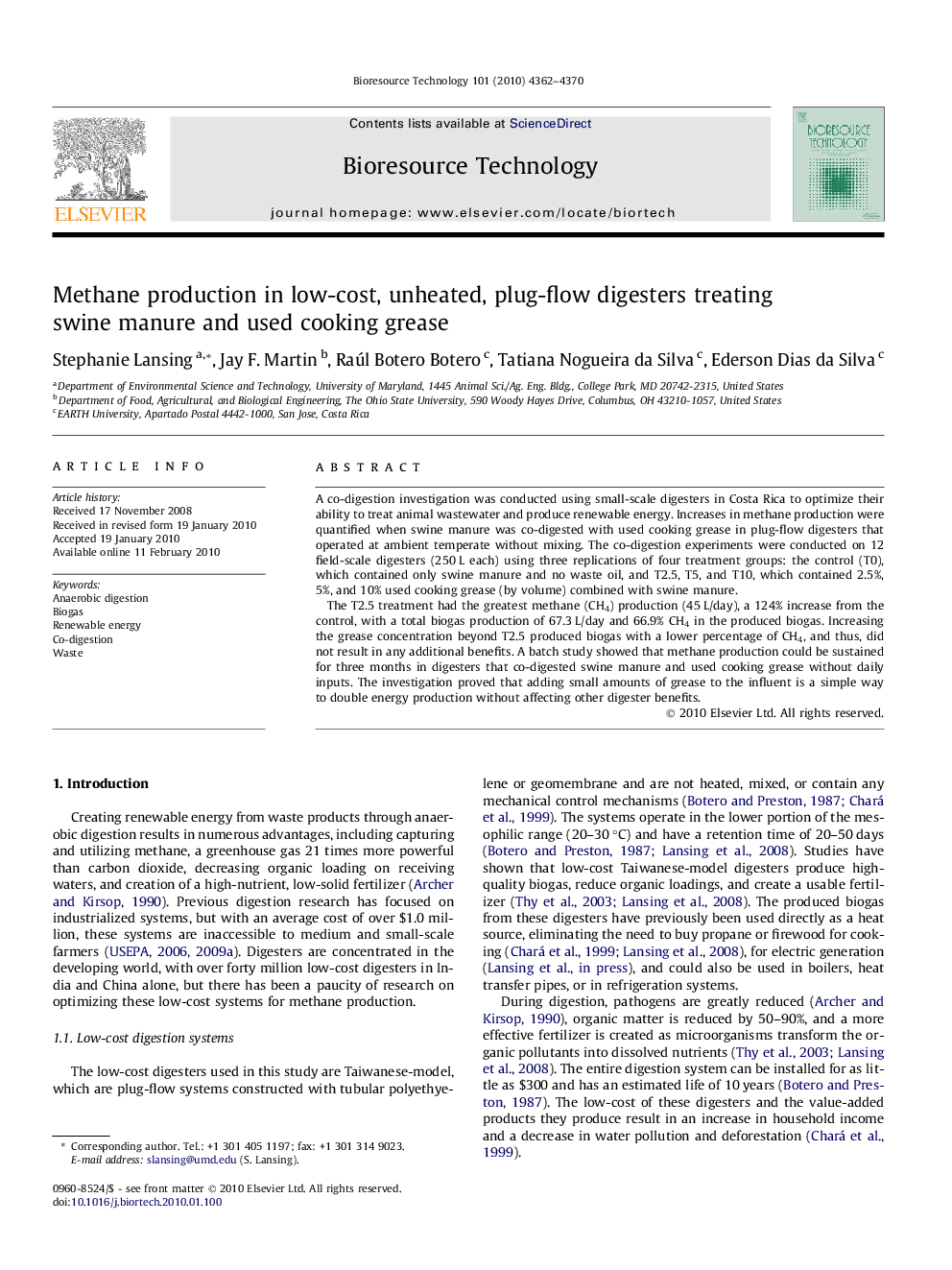| Article ID | Journal | Published Year | Pages | File Type |
|---|---|---|---|---|
| 10395605 | Bioresource Technology | 2010 | 9 Pages |
Abstract
The T2.5 treatment had the greatest methane (CH4) production (45Â L/day), a 124% increase from the control, with a total biogas production of 67.3Â L/day and 66.9% CH4 in the produced biogas. Increasing the grease concentration beyond T2.5 produced biogas with a lower percentage of CH4, and thus, did not result in any additional benefits. A batch study showed that methane production could be sustained for three months in digesters that co-digested swine manure and used cooking grease without daily inputs. The investigation proved that adding small amounts of grease to the influent is a simple way to double energy production without affecting other digester benefits.
Related Topics
Physical Sciences and Engineering
Chemical Engineering
Process Chemistry and Technology
Authors
Stephanie Lansing, Jay F. Martin, Raúl Botero Botero, Tatiana Nogueira da Silva, Ederson Dias da Silva,
